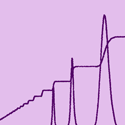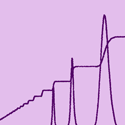Spin-polarized fractional quantum Hall effect
The fractional quantum Hall effect (FQHE) is a well-known collective phenomenon that was first seen in a two-dimensional gas of strongly interacting electrons within heterostructures. The system behaves at very low temperatures and high magnetic fields as if it were composed of particles with fractions of the elementary charge and exhibits a series of plateaus in the Hall resistance at fractional filling factors (ratio of number of electrons to the magnetic flux quanta). Subsequently, FQHE has also been observed in ultraclean, suspended graphene, also a two-dimensional system but with a difference: electrons in graphene behave as massless chiral fermions.
In an article appearing in Physical Review B, Benjamin Piot from Laboratoire National des Champs Magnétiques Intenses, Grenoble, France, and collaborators from the Czech republic, Germany, and Poland report the first observation of the fractional quantum Hall effect in a high-mobility quantum well at millikelvin temperatures. is a single valley, direct gap II-VI semiconductor in which the bare electronic g factor is about four times larger than in . That results in a relatively high intrinsic Zeeman energy that can overcome the Coulomb energy to align the spins with the magnetic field and display fully developed FQH states in the upper spin branch of the lowest Landau level. A significant advantage of this system is the possibility of incorporating magnetic ions to form a diluted magnetic semiconductor for possible applications in spintronics and also to study the many-body effects in the presence of high Zeeman energy. – Sarma Kancharla





